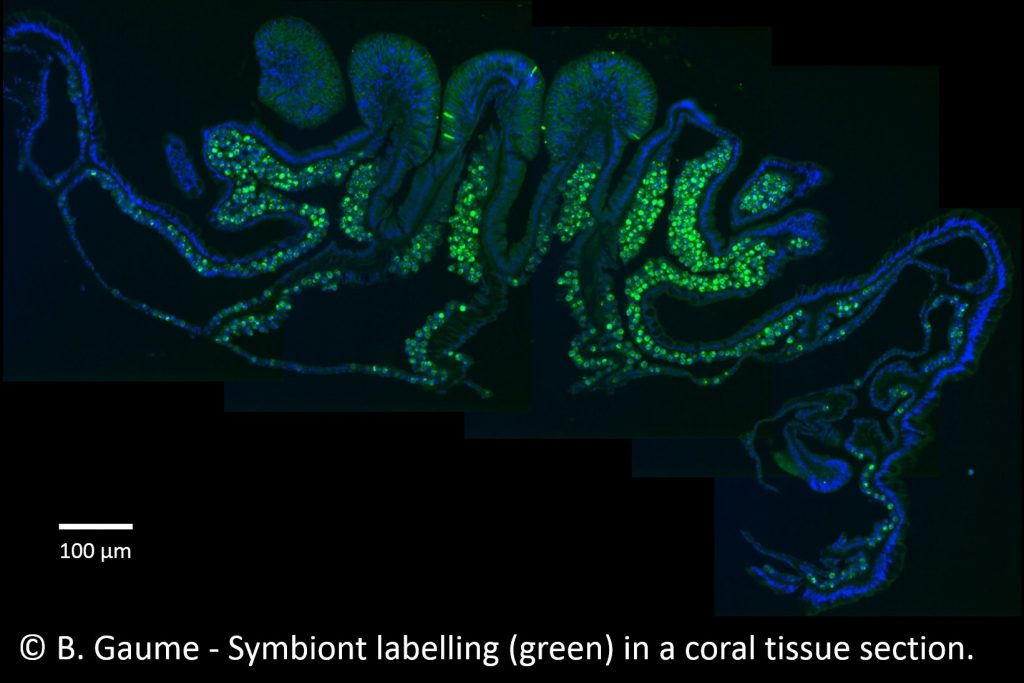
Metabolic interactions in cnidarian holobiont symbiosis
A plethora of cnidarians, especially corals and anemones, forms a symbiotic relationship with photosynthesizing dinoflagellates of the family Symbiodiniaceae. The mutualistic relationship enables the holobiont (i.e., the association of the cnidarian host and algal symbiont) to thrive in nutrient-poor environments by sharing resources acquired auto- and heterotrophically.
During my PhD thesis I will investigate how a cnidarian host interact metabolically with its symbionts. The main scientific question is: At what spatial and temporal scale does translocation of photosynthates from symbiont to host take place in a homeostatic cnidarian holobiont system? A working hypothesis is that such translocation and transport of photosynthates within the host tissue can be highly directional and targeted to tissue regions with high metabolite demands. I will explore this by using a novel combination of microsensors with correlated electron microscopy and NanoSIMS isotopic labeling. Combining these tools allow me to correlate oxygen dynamics as a function of light propagation in cnidarian tissue with isotopic labeling experiments to trace the translocation of autotrophically assimilated carbon from photosynthetically active regions to regions that are not photosynthetically active within the host tissue.
